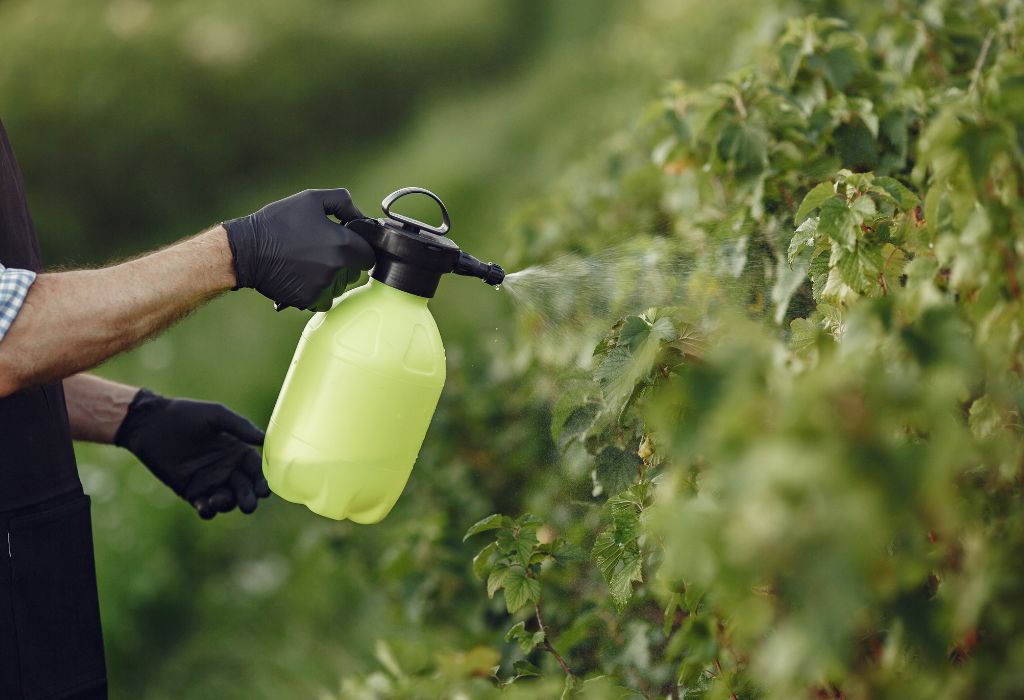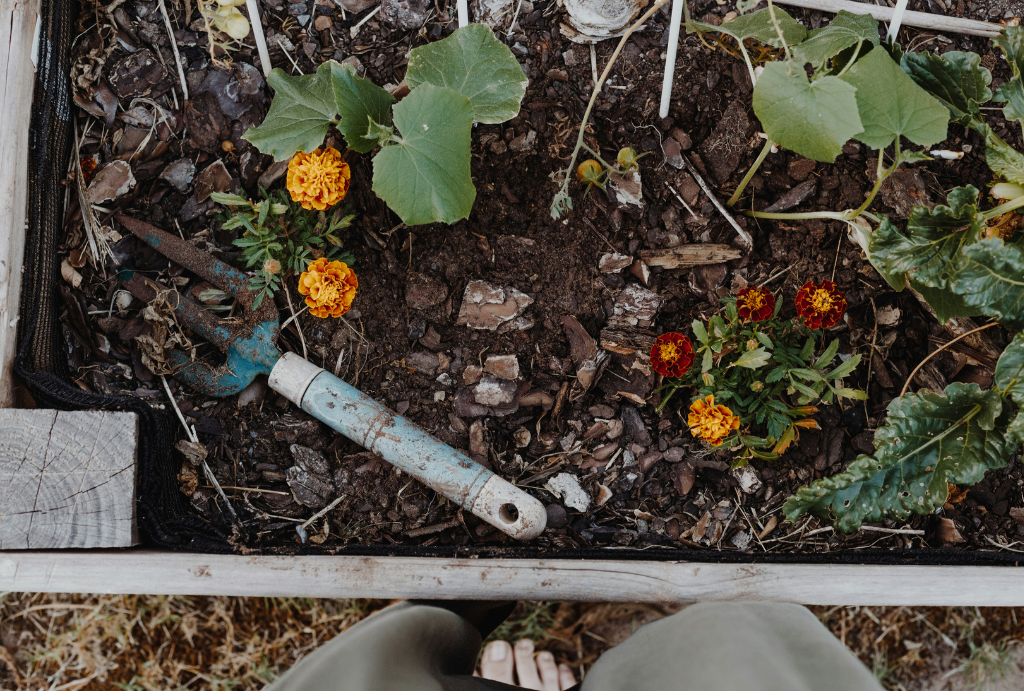You plant your vegetables, water them carefully, and wait for them to grow. But before long, you notice weeds sprouting everywhere—stealing sunlight, nutrients, and water from your plants.
Studies show that weeds can reduce garden yields by 30–50% if left uncontrolled. On average, home gardeners spend over 120 hours a year battling weeds, making it one of the most time-consuming garden chores.
But the good news is that killing weeds doesn’t always require harsh chemicals. With the right mix of natural, eco-friendly, and safe chemical methods, you can enjoy a thriving, weed-free garden.
This guide will walk you through the most effective ways to kill weeds in your garden and keep them from coming back.
I. Why Killing Weeds Matters

- Weeds compete with vegetables, flowers, and fruits for water, nutrients, and sunlight.
- They reduce yields significantly, leaving plants weak and underdeveloped.
- Many weeds harbor insects, fungi, and plant diseases.
- They spoil the appearance of a clean, well-kept garden.
Without proper weed management, even the best soil and seeds won’t deliver healthy results.
II. Natural Ways to Kill Weeds in Garden
Not every weed requires chemical treatment. Many natural methods work just as well while keeping your soil and plants safe.
1. Hand-Pulling
- Best for small gardens or early-stage weeds.
- Pull weeds when the soil is damp (after watering or rain).
- Make sure to remove the entire root—especially for perennials.
2. Hoeing and Shallow Cultivation
- A quick way to slice weeds just below the soil surface.
- Hoe lightly to avoid bringing dormant seeds to the top.
- Works best for young weed seedlings.
3. Mulching
- Blocks sunlight and prevents seeds from sprouting.
- Organic mulches: straw, shredded leaves, wood chips.
- Inorganic mulches: gravel, landscape fabric, plastic sheets.
- Apply a 2–3 inch layer for best results.
4. Soil Solarization
- Cover moist soil with clear plastic for 4–6 weeks during hot weather.
- The heat kills weed seeds and soil pests.
- Works especially well in vegetable gardens before planting.
5. Boiling Water
- Pour directly onto weeds growing in cracks, pathways, or borders.
- Instantly kills small weeds but not ideal for large garden beds.
6. Homemade Sprays
- Vinegar + dish soap – burns leaves and dehydrates weeds.
- Salt water solution – works on driveways but should not be used in soil.
- Lemon juice – natural acid that damages weed foliage.
7. Corn Gluten Meal (Pre-Emergent)
- Stops weed seeds from sprouting.
- Works best in lawns and flower beds.
- Must be applied at the right time (spring or early fall).
III. Chemical Methods to Kill Weeds (Use With Caution)
Sometimes weeds are too tough for hand-pulling or natural sprays. In these cases, selective and careful chemical use may be necessary.
1. Selective Herbicides
- Target specific weeds, like broadleaf weeds, without killing grass or crops.
- Useful in lawns where you want to keep grass intact.
2. Non-Selective Herbicides
- Kill any vegetation they touch.
- Glyphosate-based sprays are common, but should be applied carefully.
- Best for pathways, driveways, or areas being cleared for planting.
3. Pre-Emergent Herbicides
- Applied to soil before weeds sprout.
- Stops seed germination but won’t kill existing weeds.
- Effective for seasonal weed prevention.
4. Safety Precautions
- Always read and follow label instructions.
- Wear gloves, mask, and eye protection when spraying.
- Avoid spraying on windy days to prevent drift.
- Keep pets and children away until treated areas dry.
IV. Eco-Friendly & Modern Alternatives

1. Flame Weeding
- Uses propane torches to heat and kill weeds.
- Best for gravel paths, driveways, or large areas.
- Requires caution to prevent fire risks.
2. Steam Weeding
- Machines produce high-temperature steam that destroys weeds.
- Safe and chemical-free but more expensive.
3. Organic Store-Bought Sprays
- Many brands now offer eco-certified weed killers.
- Usually vinegar or clove oil-based.
4. Biological Control
- In larger landscapes, some gardeners introduce grazing animals like goats.
- They naturally feed on weeds and keep growth under control.
V. Mistakes to Avoid When Killing Weeds
- Over-tilling the soil, which brings buried weed seeds to the surface.
- Ignoring roots—cutting weeds without removing roots allows regrowth.
- Spraying chemicals on windy days, causing damage to nearby plants.
- Allowing weeds to flower—each weed can release thousands of seeds.
VI. Seasonal Strategies for Weed Killing
1. Spring
- Apply mulch before weeds germinate.
- Use pre-emergent herbicides if needed.
2. Summer
- Hand-pull weekly to prevent seed spread.
- Maintain mulch layers and apply vinegar sprays when needed.
3. Fall
- Plant cover crops like rye or clover to suppress weeds.
- Add compost to prepare soil for the next season.
4. Winter
- Remove debris and dead weeds.
- Plan rotations and soil improvements for spring.
VII. Statistics Every Gardener Should Know
- Weeds can reduce crop yields by 30–50% if left uncontrolled.
- Gardeners spend over 120 hours a year weeding.
- Mulching reduces weed growth by up to 80%.
- A single dandelion plant can produce up to 15,000 seeds.
- Cover crops reduce weed pressure by more than 50%.
VIII. FAQs: Killing Weeds in Garden
- What kills weeds permanently?
A mix of mulching, pre-emergents, and root removal ensures long-term control. - What is the fastest way to kill weeds?
Boiling water or vinegar sprays kill weeds quickly, but roots may regrow. - How do I kill weeds without chemicals?
Mulching, hand-pulling, soil solarization, and cover crops are effective natural methods. - Is vinegar safe for gardens?
Yes, but it can harm nearby plants, so use carefully. - How can I kill weeds without harming vegetables?
Hand-pull weeds, use mulch, and water directly at crop roots with drip irrigation.
Conclusion
Weeds are persistent, but with the right approach, you can win the battle. Start with natural and eco-friendly methods like mulching, hand-pulling, and cover crops. For tough situations, carefully apply chemical or modern alternatives.
The key is to combine prevention with consistent maintenance. If you act early, keep soil covered, and remove weeds before they seed, you’ll save hours of work and enjoy a healthier, more productive garden.
A weed-free garden not only looks beautiful but also gives your plants the best chance to thrive.
I’m Maya L. Greenwood, a lifelong plant lover who believes anyone can grow something beautiful with the right guidance. After years of testing soil mixes, pruning methods, irrigation tricks, and pest-safe solutions, I started EasyGardenTips.com to turn hard-won lessons into step-by-step advice. From seed starting and container gardens to composting and seasonal checklists, my goal is to make gardening simple, sustainable, and fun.
